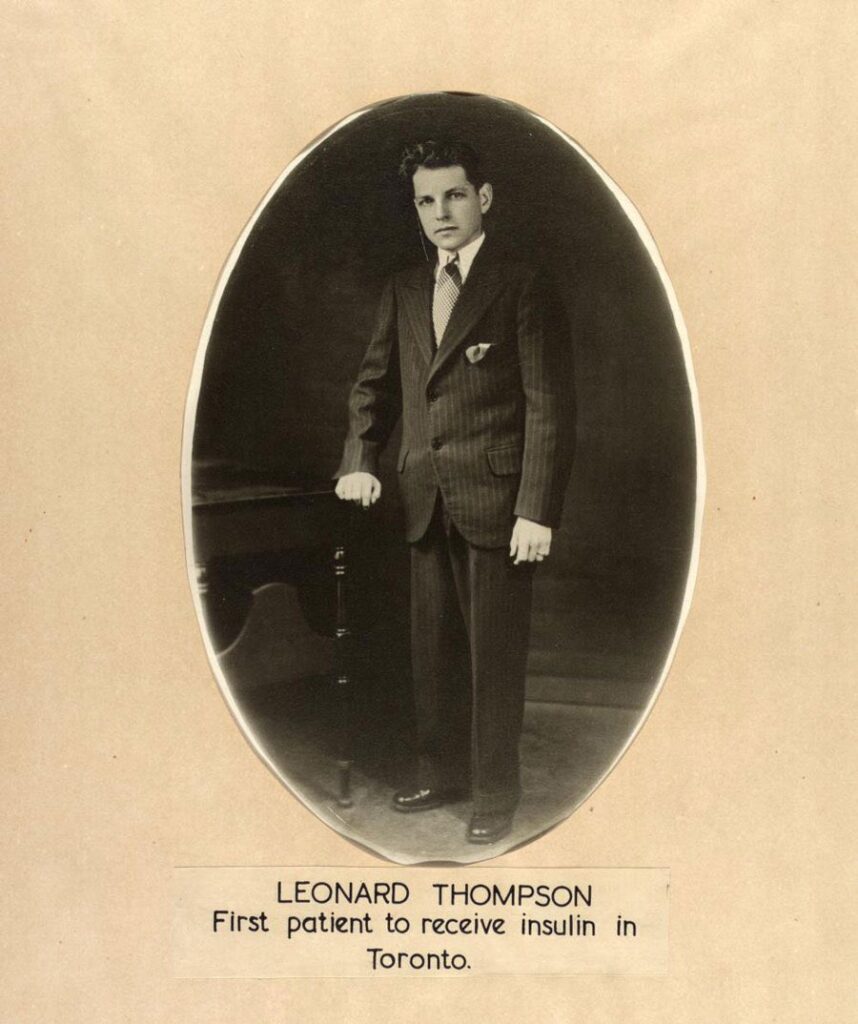
January 23rd marks the 100th Anniversary of the first successful insulin injection
JDRF’s primary goal is to cure type 1 diabetes (T1D) through research – as quickly as possible. To support people with T1D while cure research is advancing, we also fund ground-breaking research that seeks to make life with T1D easier, safer and healthier. With the discovery of insulin 100 years ago, JDRF is committed to funding the most promising research to move us beyond this treatment and toward cures.
1921
Before insulin treatment, a diagnosis of type 1 diabetes meant inevitable death. T1D destroys the beta cells in the pancreas that make insulin, without which, the body cannot maintain healthy blood sugar levels.
In 1921, Frederick Banting and Charles Best discovered that the pancreas produced the insulin hormone under the directorship of John Macleod at the University of Toronto. With the help of James Collip, they purified a synthetic version of insulin and produced the first real treatment for diabetes. To this day, it remains one of the most important scientific breakthroughs in the medical field, often called ‘Canada’s gift to the world’.
January 11, 1922
On this date, fourteen-year-old Leonard Thompson, a teenage boy who was dying from T1D complications, became the first person to receive an insulin injection. But instead of lowering his blood sugar, it caused an allergic reaction. Leonard’s doctors went back to the lab, where they worked nearly around the clock to improve the formulation.
January 23, 1922
Almost two weeks later, they returned to Leonard’s bed with a new syringe of insulin. With this version, Leonard’s symptoms began to disappear, and he regained his health. He would live another 13 years. The discovery of insulin, along with Leonard’s willingness to try this new treatment meant the death sentence that was T1D could be lifted, and people around the world could use insulin to manage their diabetes.

The importance of clinical trials
Research is how insulin was discovered and it is how we will find the next generation of therapies for T1D, and eventually a cure.
And clinical trials are an essential component of medical research and development. While Leonard’s receiving the first insulin to human injection was not known as a “clinical trial,” at the time, his participation allowed his doctors to rework and refine the formula that would make it a successful treatment for diabetes for over 100 years. In modern terms, Leonard was the first human participant in a clinical trial to test the impact of insulin on T1D.
This demonstrates the far-reaching impact of clinical trials. These studies can help bring new, better treatments to market that will impact the lives of millions. Thanks to Leonard Thompson, the updated version of insulin became a true breakthrough in diabetes care.
Funding cell replacement therapies research is one of JDRF’s most critical undertakings globally, and between our partner organizations we have invested more $140 million USD to date.
JDRF funds stem cell derived beta cell replacement trials that are ongoing right now, like those at ViaCyte, Vertex and Sernova and from here we may witness the research that leads to a T1D cure.

Participating in clinical trials
JDRF is funding many clinical trials, and one of the biggest challenges is finding volunteers to take part in studies – and it’s often because they simply didn’t know they could. It is also important to have a diverse group of participants who represent the Canadian T1D community, so that potential therapies and treatments can be tested for efficacy against the larger group who will be using them. When someone participates in a clinical trial, they help all people living with T1D, by enabling research towards better health outcomes and cures.
Choosing to participate in a clinical trial is a very personal decision. Early access to promising new treatment can be an enormous benefit. Others have found that by participating in a clinical trial, they learned more about their health or T1D management. And it can be motivating to know you are contributing to helping accelerate research that can improve the lives of people living not only with T1D, but other chronic conditions as well.
To learn more about Canadian clinical trials, and to find studies near you: https://jdrf.ca/research/clinical-trials/
One person can make a difference – watch Tilla’s story of participating in clinical trials after her T1D diagnosis
On January 11, 1922, Leonard Thompson took a leap of faith. And when that first injection did not work, he took another step forward and tried again. From the bravery of one teenage boy, came millions of people whose lives have been saved by insulin. And every year across the globe, people living with T1D celebrate their ‘insulin anniversary’ while waiting for the breakthrough that will move us beyond insulin and towards a cure.
Every person who participates in a T1D clinical trial study helps us get closer to moving therapies from the lab to the market. We recognize too their courage and are so grateful for their help in accelerating the research that will one day mean a world free from diabetes.